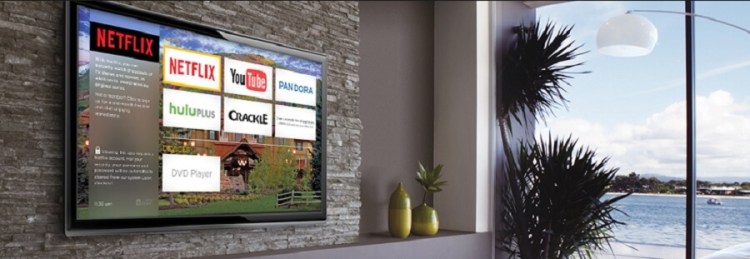Pay TV services like LodgeNet, Guest-tek, and OnCommand once ruled the hotel room TV. But now they’ve been disrupted by Enseo, which is taking over-the-top video services, such as Netflix and Hulu, into guests’ rooms. And it’s a story of porn versus Netflix.
It’s a battle that has been brewing for a while. Richardson, Texas-based Enseo was founded 17 years ago by Vanessa Ogle, who created one of the first electronic TV guides on broadcast television. She transformed it into a systems integrator that provided the single source for equipment used for TVs for in-room entertainment. For quite a while, that meant pay TV, such as porn and movies.
But as over-the-top services like Netflix became popular, it became obvious that what people wanted to watch in hotel rooms was changing. About three years ago, the company rolled out new services geared toward people’s changing expectations.
“We realized the most important content is what the guests can carry with them into the hotel room,” Ogle said in an interview with VentureBeat at CES 2017, the big tech trade show in Las Vegas last week.

Above: Vanessa Ogle, CEO of Enseo, at CES 2017.
Enseo says that only 1.5 percent of guests order paid video on demand, and most of that is porn. In hotel rooms with Enseo’s new in-room entertainment boxes, about 45 percent of the guests use Netflix.
“We know that Netflix and the OTT services are always in the top three most-watched channels at any time on any day,” Ogle said.
More than 20 million people have used Netflix on Enseo, and the services are growing every month. Hotels hire Enseo to install entertainment boxes, and then they renew their contracts for multiple years at a time. One of Enseo’s big new hotels is the Cosmopolitan in Las Vegas.
In 2014, Enseo rolled out the services to 2,000 rooms. In 2015, that became 20,000 rooms. In 2016, the company introduced the services to 150,000 rooms. The company has also grown during this period. In 2015, Enseo had 35 employees; now it has 125 people. And revenues have been expanding quickly, as well. In 2013, the company brought in $8 million. And in 2016, it was more than $40 million.
“Now we have millions of hours on the system every single month,” Ogle said. “It’s like we’re an overnight success 17 years later.”
Ogle hasn’t raised any money in all those years. But the growth is happening so fast that she is considering raising a round of funding.
“The business is growing so much right now that it’s a great time to consider it,” Ogle said.


